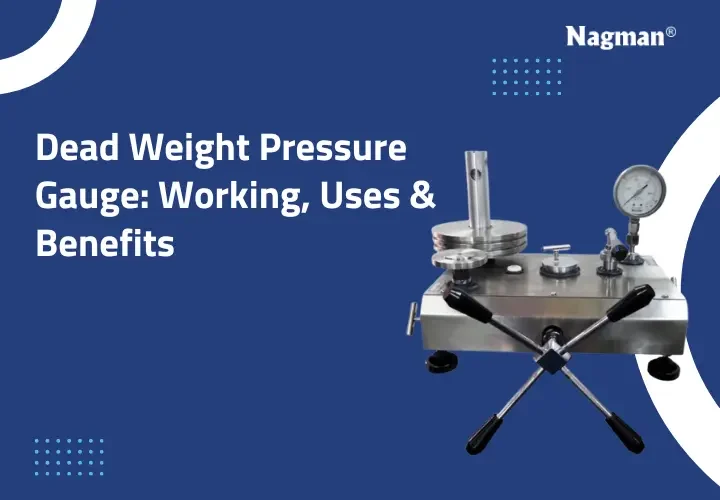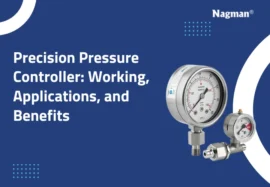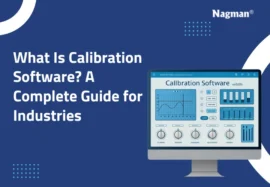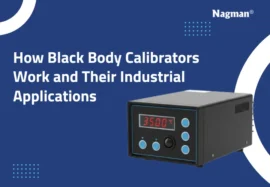Measuring pressure is critical in ensuring accuracy, safety and efficiency in industrial processes. Instruments used to measure pressure should hence be very reliable and precisely calibrated. The dead weight pressure gauge is a reliable instrument due to its accuracy, stability, and reliability during calibration. In this blog, we explore what a dead weight gauge is, how it works, its different types and uses and the advantages of the device.
What is a Dead Weight Pressure Gauge?
This tool is a standard device used to calibrate other pressure-gauging tools. It works by balancing an unknown pressure with a known weight on a known area. This makes it one of the most accurate ways of calibrating pressure gauges.
The device is made up of a piston-cylinder set, a set of calibrated weights and a pressure-generating system. The force applied on the piston by the weights is known, creating a reference pressure which can be compared with the reading of the gauge under calibration. The dead weight gauge is highly accurate and traceable, as it uses fundamental physical quantities like mass, area, and gravity.
Working Principle of Dead Weight Pressure Gauge
The principle on which the dead weight pressure gauges work is simple but effective: pressure equals force divided by area. The pressure applied to the system is balanced by the weight that acts downwards on the piston. A dead weight tester is used to pressurise the system, and pressure builds up below the piston. The piston lifts slightly, and when the upward pressure equals the downward weight force, equilibrium is achieved.
Since the dead weight testers are designed to be highly precise and the piston is perfectly polished to ensure minimal friction, pressure readings taken are accurate and repeatable.
Types of Dead Weight Pressure Gauges
Dead weight pressure gauges are of various types, made to fit the requirements for different pressure ranges and uses:
Hydraulic Dead Weight Testers: These are used in the medium- to high-pressure range and normally use oil or water as the working fluid.
Pneumatic Dead Weight Testers: These use either air or gas and are ideal for low-pressure calibration work that requires cleanliness and contamination control.
Dual Range Testers: These systems are built by adding both hydraulic and pneumatic systems for a broader pressure range.
Uses and Applications
This device is used in many sectors, including:
Calibration Laboratories: These are used as a primary standard for calibrating pressure transmitters, sensors and gauges.
Oil and Gas Industry: Determines the accuracy of pressure monitoring systems and is used during drilling and extraction of oil.
Power Generation: It is used for maintaining boiler pressure and turbine control systems.
Aerospace and Defence: The laboratory provides calibration accuracy for pressure-based instruments in aircraft and military applications.
Manufacturing and Testing Units: Helps in verifying the performance of pressure instruments in the production lines.
Benefits of Dead Weight Pressure Gauge
The dead weight tester offers multiple benefits as compared to other kinds of pressure gauge calibration equipment:
High Accuracy: It provides the most accurate and repeatable measurements, as it is based on fundamental physical principles.
Traceability: It is easy to trace the measurements back to national or international standards to ensure credibility.
Durability: Built from robust materials that can handle heavy use in industrial environments.
Wide Range of Operation: Can be used in both low- and high-pressure operations.
Self-Sustained System: Does not need constant electricity and thus can be used for fieldwork.
Long-Term Stability: Maintains accuracy even when used over a long duration with minimal maintenance.
Dead Weight Pressure Gauge vs Other Gauges
Dead weight pressure gauges stand out when compared to the digital or Bourdon-type pressure gauges due to their reliability and accuracy. The digital gauges are more comfortable and quicker to operate, but they rely on electronic parts which drift over time. Bourdon-type gauges, on the other hand, are suitable for general use but not for high-precision calibration.
On the contrary, a dead weight tester is the master reference standard, ensuring all other pressure gauges in an industry provide accurate readings.
Conclusion
Dead weight pressure gauges have become a reliable device in a world that requires precise pressure measurements. It is an essential component in preserving the integrity of pressure-measuring devices in the industries due to its basic working principle and unparalleled accuracy. Investing in a dead weight pressure gauge is an investment in reliability and confidence for industries where precision is important.






